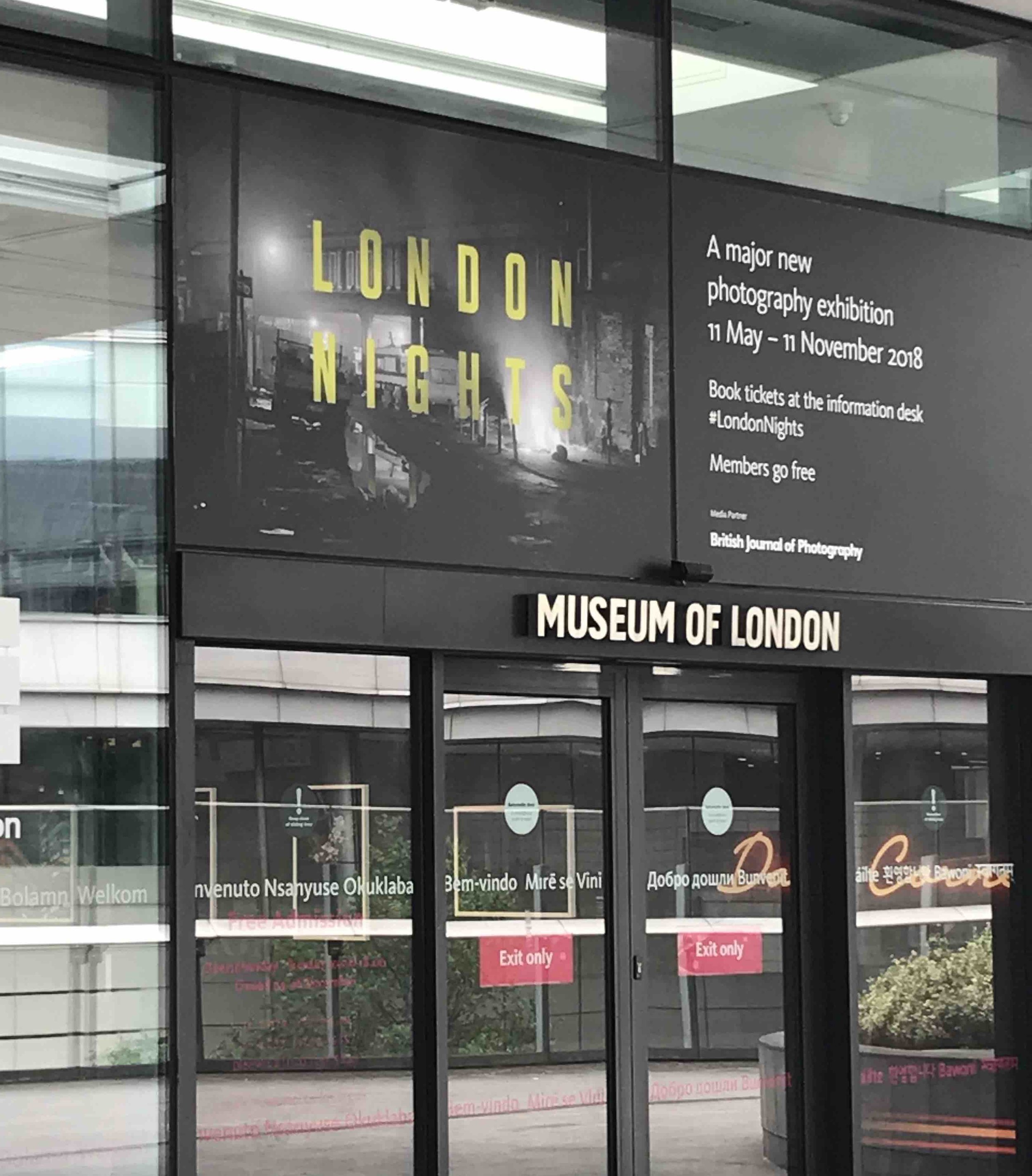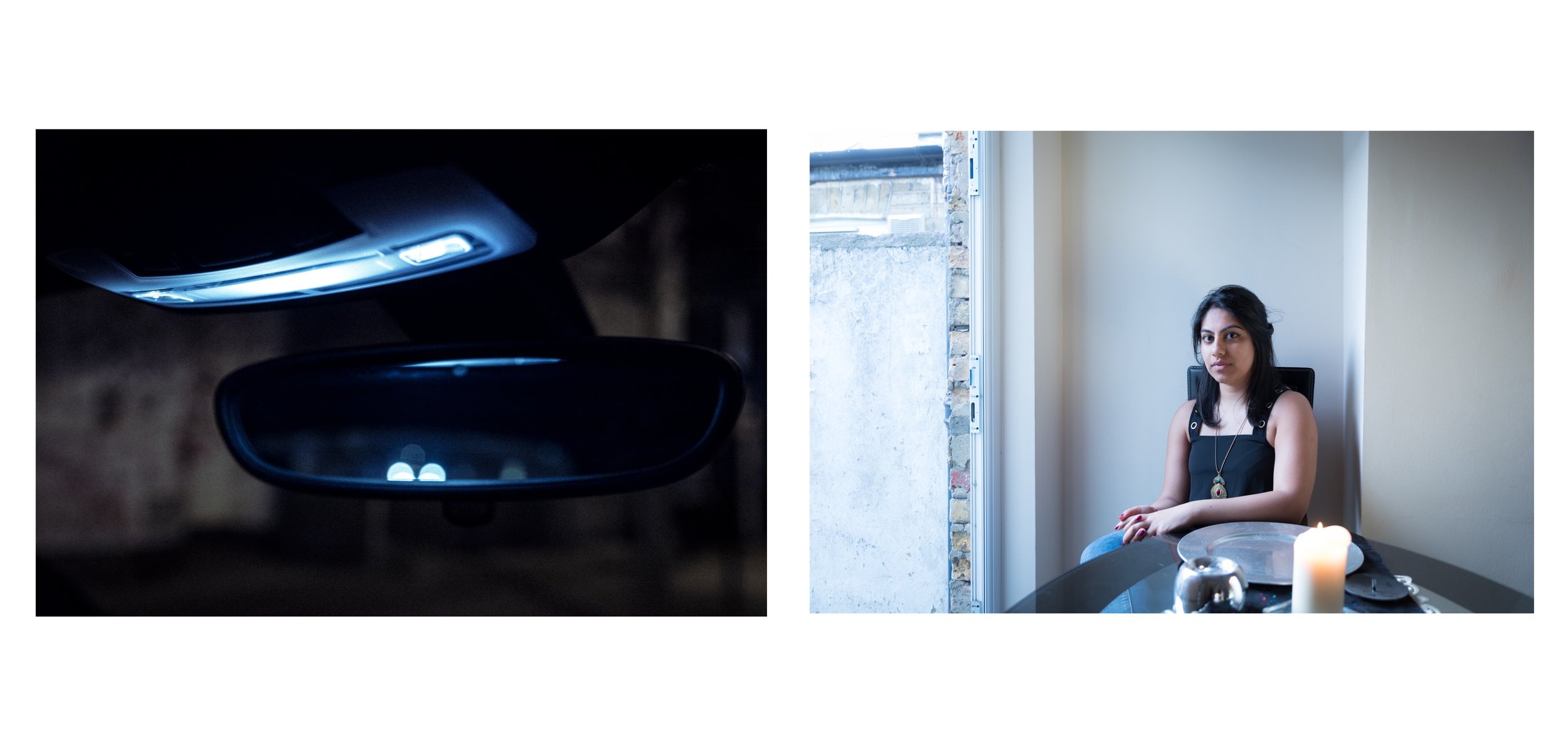The end of this module and the MA course has arrived so quickly. With my head still spinning from the whirlwind of activity that preceded and encompassed the exhibition and website launch it is difficult to rationalise what might come next.
I was surprised to be asked a number of times at the Reaching Out Into The Dark private view“So what’s next Justin?”, and as the reality that I’m soon going to be a former student starts to sink in, I’m obliged to start trying to come up with some answers.
Visitors to the ROITD Private View
Here is what I have so far:
Project
The work so far in this project feels very provisional, like only a surface scratched, with the FMP outcomes simply demonstrating the potential audience for the work and also how many more facets of this theme there are to uncover and explore.
I’m proud of what I’ve achieved so far but already have a clear idea of the next few steps for the work, visually, which include:
· The urgent need to include older people in this work. This is especially important as I’m confronted with lonely older people every day in my job, such that it feels almost criminal not to give them a platform in this project and a prominent one at that! There is also the need to represent younger people (adolescents mainly) and finding a way to reach this group and engage them with this work will be a future challenge no doubt.
· A need to better represent the internal world of solitude and loneliness, both with more images of interior spaces, and by finding an effective way to visually depict the internal emotional landscape. I think my work already does this to some degree (hopefully), it certainly reflects my own internal emotional landscape in a sense, but there are a variety of emotional responses to this subject (not all of them negative of course) that would be really interesting states to explore photographically if this could be done in a manner that wasn’t too obvious and was based on a coherent visual strategy. My initial goal had been to explore solitude, this gradually evolved to me wanting to explore solitude and loneliness as I started to research the theme and understand the topic more. This further developed into a desire to better represent the positive aspects of a solitary life. Latterly though, I’ve thought a lot more about specific scenarios and how they could be explored, such as feeling alone despite being in a relationship, or the feeling of being alone among a large throng on a busy street in rush hour – all these experiences that are broiling away internally but which may never be discernible on the external surface of our persona, yet have a profound impact on the way we experience the world and relate to each other. This is a really interesting area that I am keen to explore further. I’ve been thinking a lot about this since the exhibition concluded and it might even be separate project, or sub-project, as the potential ground to cover is vast.
My internal emotional landscape?
· I also want to examine the role that technology plays in our modern solitude. There’s an irony that while we were all sold these devices as ways to better connect with each other, we spend most of our time now experiencing daily life with our heads down fixated on a small screen whenever we are out in the world, such that the happenings of the world around us and the existence of other actual humans is no longer necessarily a vital part of our daily experience in the main. We thus live a voluntary solitude, detached from each other and hypnotised by our personal mini computers. It’s not clear whether these were the intended consequences of these devices but this is the reality we are faced with and it’s interesting to consider what that means for our emotional and mental health and what it means for our wider communities and societies.
· Reconsideration of the outputs and how best to use them is another element that can further progress the aims of the project. I’ve learnt a number of useful practical lessons during FMP, particularly from putting together an exhibition. Reflecting on the aspects of the planning that worked well and what things I’d wish to do differently in the event of a future exhibition is important learning to take forward. I’m also more convinced of the need for a book as an eventual output for this work. I arrived at this conclusion after seeing the work take shape during the website build and getting a clearer understanding of how the interaction of text and image might work to successfully communicate to the viewer on a page as well as a screen. Continuing to refine and mature the work over the coming year or two will gradually make a book project seem like a foreseeable future milestone of the project I believe and will offer yet another way to present and experience this work.
Considering one of the aims of this project is to stimulate dialogue and help to facilitate discussion about the experience of loneliness and solitude, I’ve always been keen to find a way to take the work outward in the form of a workshop. This had formed part of an (as it now seems) ambitious FMP project proposal, but it remains an important pillar of what I would consider to be a fully realised project.
Shutter Hub’s Camera Amnesty campaign to help homeless photographers
To that end, I’ve already made initial contact with Shutter Hub, an organisation that has a lot of experience of delivering talks and workshops, about how we might collaborate to bring this work to a different audience in that format. Shutter Hub have already been working with potential target groups in their own outreach work and so it would be a potentially mutually beneficial collaboration that would align with their existing corporate activities.
Practice
Moving forward I have to consider how I will balance my photographic practice with imminent changes in my job, working pattern and place of abode. The MA has given me a much better understanding of how to approach trying to communicate through photographs and associated/accompanying media, as well as a grounding in how to carry out research to support one’s visual aims. I’ve also learned practical skills that will benefit my practice and my ability to connect and collaborate with other practitioners. The aspects of my practice that I will be concentrating on in the immediate post-MA future are likely to include:
· Continued regular contextual research to support the ongoing progress of this project but also to provide the basis for potential future work of a different nature. It’s not always possible to directly quantify how the research done contributes to the final work but it certainly does, and this is one of the aspects that sets my current work apart from what I was producing before starting this course. My work now is supported by extensive research of visual and written media and prolonged reflection, whereas before I was just taking photographs that interested me for no clear reason. That’s not a bad thing in itself of course, but I can say that the work I’m producing now is a more eloquent expression of my ‘voice’ than anything I produced previously. This is only due to the research and consideration which underpins it and thus I look forward to further clarifying my voice with ongoing research and learning.
· Writing will become an increasingly important element of my practice moving forward. I very much enjoyed writing for this project, in the process reawakening an interest in creative writing that I’d had in my much younger days. While continuing to write more critically during the course as well as book reviews elsewhere, I envisage less constrained writing being a larger proportion of my future output. I’ve found writing to be a good way to synthesise my reflections and the conclusions I’ve made about the work I’m doing, and so the writing serves to further my thoughts and offer another conduit to connect with the emotions that I always want to bring to my work. Thus, in the time that’s freed up after the completion of the MA I intend to take a writing course to help develop my competence in this area and will continue to write at every possible opportunity.
Excerpt of my review of Robert Hirsch’s book Seizing The Light on Amazon
· Another aspect of my practice that I will be concentrating more on in the future is networking and self-promotion (horrible as that sounds!). The exhibition cemented the importance of this for me, as the private view was attended by a number of people who became aware of me on social media. Edo Zollo, a photographer I’ve looked up to for years, was kind enough to visit my private view and stated that he’d been following me for years and that I was one of his favourite photographers. This was very surprising and obviously great to hear, but it also highlighted the importance of presenting yourself online. He’d never have heard of me otherwise and it’s currently the best way to connect with your audience, communicate your motivations and describe your practice in ways that people will hopefully identify and engage with. I saw this in action during this FMP and I have to take this aspect of my practice more seriously if I hope to reach a bigger audience, position myself for future professional opportunities and connect with potential collaborators. I’m by no means comfortable with what can at times seem like relentless self-promotion but I have to find a happy medium where I’m regularly nurturing this audience of supporters and steadily adding new followers as well, people who are supporters of my practice in one way or another. There is a lot to learn too about how to promote and market specific events. My exhibition only came together at very short notice, so it wasn’t possible to build a solid buzz about it with a long lead-up. In future, the planning of the exhibition will take better account of what’s needed to promote it effectively to give it the best possible chance of success. These practical lessons are one of the most useful takeaways from the MA course for me. Being an artist is great, the licence to stay in your head where dreams live, the onus to be creative, to challenge conventions and to bravely explore new territories. Yet there is no escaping the practical realities involved in researching, producing and promoting the work. I’ve learnt some of these realities first hand (my credit card can certainly give you some chapters about the harsh realities too!) in these final weeks and have a more pragmatic appreciation of what is required to continue making good work, that people will want to see and possibly support, in the future.



















